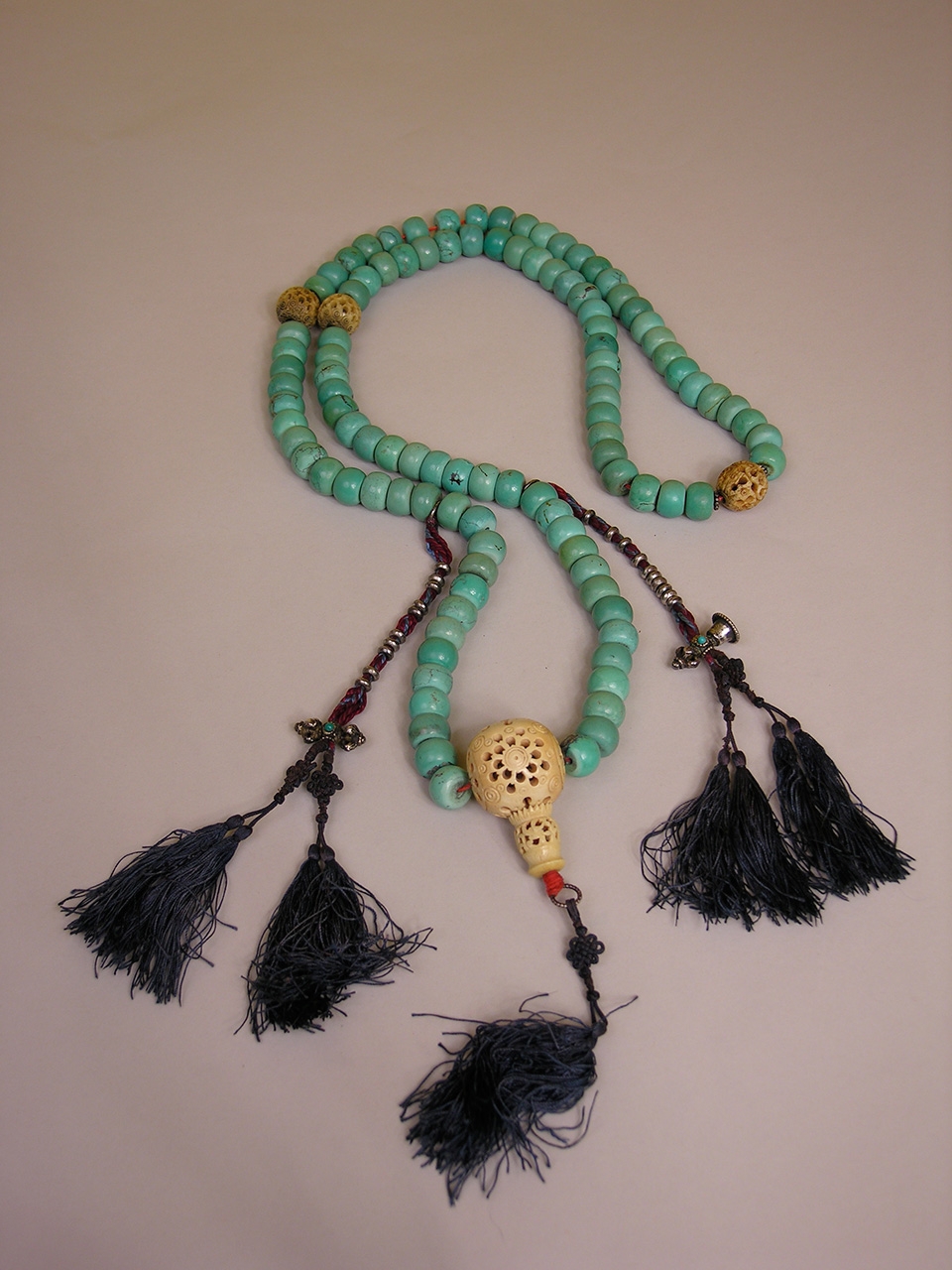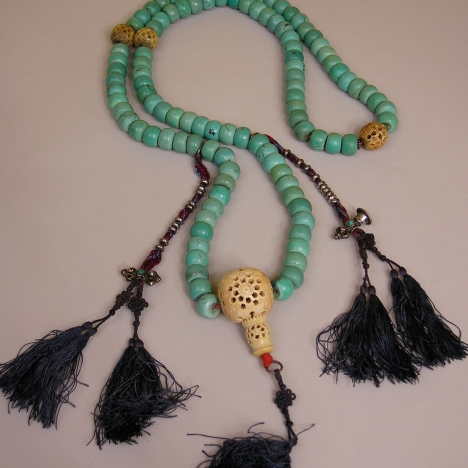
In Tibetan Buddhism prayer beads are used to count the recitations of prayers and devotional invocations (mantras), a process that allows the practitioner to accumulate merit—the more recitations, the more merit accrued. This strand has a standard 108 beads, an auspicious number rooted in early Buddhist literature on prayer beads and pre-Buddhist Indian beliefs but also symbolic of purifying the 108 causes of negative karma.
Certain materials are thought to impact the merit accrued particularly when associated with a specific type of Buddhist practice. For instance, these beads are made of turquoise, highly regarded by Tibetans as a jewel and thus considered one of the best and most effective materials for accruing merit with prayer beads. The other beads, which divide the turquoise beads into groups of 27, are made of carved bone, which is most suitable for practices related to wrathful deities. The two string attachments, which include silver ornaments, are used to count rounds of full string recitations, with one used for single rounds and the other for hundreds.
Prayer beads are religious objects of a particularly personal nature, and so the materials often reflect both the status and taste of the beads’ owner. This set, with its precious stone and metal and intricately carved bone, once belonged to a princess of Derge in southeastern Tibet.
L 22 1/2 in.
C2012.6.13
- https://dev.rubinmuseum.org/images/content/793/c2012.6.13_tibet_18__zoom.jpg__zoom.jpg
- https://dev.rubinmuseum.org/images/content/793/c2012.6.13_tibet_18__zoom.jpg__zoom.jpg


